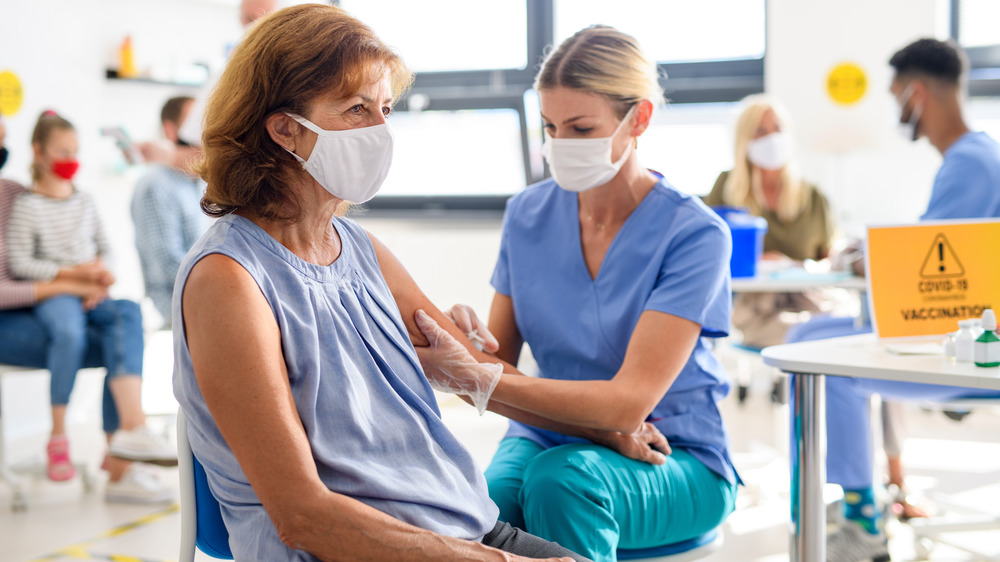3 Signs That Mean Your COVID-19 Vaccination Is Working
If you've gone through the process of getting the COVID-19 vaccine, or plan to do so soon, you want to know that it will work for you. After all, even a 95 percent success rate means a few people likely won't be protected by the vaccine. Thankfully, there are a few things that will indicate to us that the COVID-19 vaccine is working.
First though, it's helpful to understand what's going on in your body after you receive the vaccine. Both the vaccines in use in the United States, Pfizer and Moderna, are created using messenger RNA (mRNA) technology. When you get the shot in your arm, the muscle cells where the shot is delivered begin creating spike protein, according to the Cleveland Clinic. Your body believes you've been infected with the coronavirus and will rush immune system defenses into action to combat the invader.
Immune cells will be delivered both to the injection site and throughout your body, so side effects may be both local or systemic. It's important to know, however, that as many of 50 percent of people don't experience any side effects at all, but the vaccine is still working.
Symptoms should be mild and short-lived
There are three specific side effects to watch for after getting the vaccine, according to Amanda Cohn, M.D., a member of the Centers for Disease Control's National Center for Immunization and Respiratory Diseases. Cohn spoke to BestLife, and said all three should be mild.
Pain at the injection site is the first thing to expect. As with most immunizations, your arm is likely to be sore for a day or two. Though you can use a pain reliever after you get the shot to ease soreness, the Centers for Disease Control and Prevention recommends not to take one in advance of your vaccination as it may interfere with the vaccine's effectiveness.
Fatigue is another common side effect, and it's an indication that your immune system is working hard. Try to plan a simpler schedule for the day or two after the shot, and remember that your body needs rest to do its important work.
You may also experience a low-grade fever, which is anything under 100.4 degrees Fahrenheit. Though this fever may make you feel uncomfortable, it should only last 24 to 48 hours, according to the Mayo Clinic. You can take a fever-reducing medication like Tylenol to help with discomfort.
Try to remember that these side effects, while frustrating, are an indication that your body is doing it's job well, and protecting you against this potentially deadly disease.


